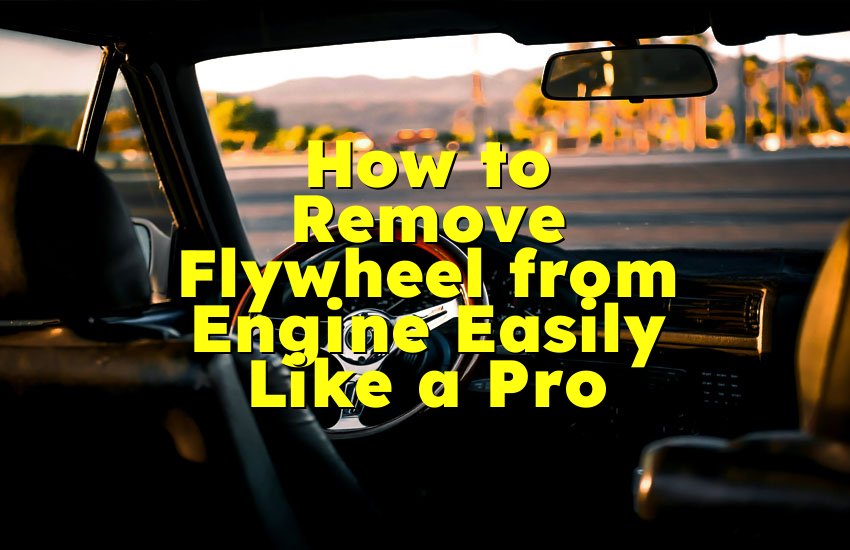As an Amazon Associate, I earn from qualifying purchases at no extra cost to you.
How Much Coolant Do I Need for My Car? The Complete Guide
You probably know how important it is to keep your car running smooth, right? One of the biggest things that many people forget is coolant. If you don't have enough coolant in your car, your engine can get really hot and cause serious damage.
So, how much coolant do you actually need? Well, most cars usually need between 1 to 3 gallons of coolant, depending on the size and model of your car. In this article, I'll walk you through everything you need to know about coolant amounts, why it matters, and how to check and add it easily.
Understanding What Coolant Is and Why Your Car Needs It
Coolant, also called antifreeze, is a special liquid that helps keep your car's engine from getting too hot or freezing in cold weather. It moves through the engine and absorbs heat, then sends that heat to the radiator where it cools down. Without enough coolant, your engine can overheat quickly, causing big problems like warping parts or even engine failure.
Many people think coolant is just water, but it's actually a mix of water and chemicals that protect the engine. This mix helps prevent rust inside the engine and stops the coolant from freezing when it's really cold outside.
Knowing why coolant is so important helps you see why you should always keep the right amount in your car. If you add too little, your engine can overheat. If you add too much or use the wrong kind, it might not work well or could even damage parts.
Coolant also comes in different colors like green, orange, or pink, and each type is made for different cars or engines. So, it's important to check your car's manual or ask a mechanic before picking the right coolant.
Your car's cooling system is like a team working together: the coolant, the radiator, the water pump, and the thermostat all have to work just right. If any part fails or if coolant leaks, the system can't keep the engine safe. This is why knowing how much coolant your car needs is more than just a number—it's about protecting your car from costly repairs.
- Coolant is a mix of water and chemicals that keep the engine from overheating or freezing.
- Different cars need different amounts and types of coolant.
- Using the wrong amount or type can cause engine damage.
- The cooling system parts must work together with the coolant to keep the engine safe.
Checking Your Car's Coolant Level the Right Way
Before you add or think about how much coolant your car needs, you have to check how much is already inside. The easiest way to do this is by looking at the coolant reservoir. This is a clear plastic tank usually near the engine, with marks on the side that say 'Full' or 'Low'.
If the coolant is below the 'Low' mark, you need to add some. But be very careful—never open the radiator cap when the engine is hot. Hot coolant can spray out and burn you badly. Wait until the engine cools down, usually after at least 30 minutes, before opening it.
If your car doesn't have a clear reservoir, or if you want to check the radiator itself, you can carefully open the radiator cap when the engine is cool. You should see the coolant near the top. If it's low, you'll need to add some. Some cars have sensors that warn you when coolant is low, but not all, so it's good to learn how to check manually.
When you check the coolant level, also look for signs of leaks or dirty coolant. Coolant should be bright in color and clean, not rusty or dirty. Leaks often show as wet spots under the car or a sweet smell near the engine. If you see leaks, you might need to fix them before adding more coolant.
- Check the coolant level in the reservoir or radiator only when the engine is cool.
- Look for 'Full' and 'Low' marks on the reservoir.
- Never open the radiator cap when the engine is hot.
- Watch for leaks or dirty coolant that needs fixing.
How to Choose the Right Coolant for Your Car Model
Every car is different, and the right coolant for one car might not work well for another. Choosing the correct coolant is very important because wrong coolant can damage your engine or cooling system parts. The best way to find out what coolant you need is to look in your car's owner manual. It will say exactly which type or brand you should use.
There are different types of coolant: some are made with organic acids (called OAT), some with inorganic acids (called IAT), and some are hybrids (HOAT). The colors often help tell them apart, but color alone is not enough to choose.
For example, many older cars use green coolant (IAT), while newer cars often use orange or pink coolants (OAT or HOAT). Mixing types can cause the coolant to get thick or form sludge, which clogs up the system.
If you can't find your manual or are unsure, a mechanic or parts store can help you pick the right coolant. Also, some coolants come pre-mixed with water, and some need to be mixed by you. Using pre-mixed coolant is easier and safer for most people because the mixture is ready to go.
- Check your car manual for the exact coolant type recommended.
- Don't just pick coolant by color alone.
- Mixing different types of coolant can cause damage.
- Use pre-mixed coolant if you want an easy option.
Calculating How Much Coolant Your Car Needs
Once you know your car's coolant type, you need to figure out how much to add or replace. Most cars hold between 6 and 15 quarts of coolant (1.5 to almost 4 gallons), depending on the engine size and cooling system design. Small cars usually need less, and trucks or SUVs need more.
If you are just topping off the coolant because the level is low, you only need to add enough to reach the 'Full' mark on the reservoir. This might be just a few cups or pints. If you're flushing and replacing all the coolant, you'll need to fill the entire system, so follow your manual's capacity. This can take a couple of gallons.
When mixing coolant concentrate with water, the usual ratio is 50% coolant and 50% water. This gives the best protection against freezing and overheating. If you use pre-mixed coolant, just fill it up without mixing. Be careful not to overfill because too much coolant can cause pressure problems in the cooling system.
- Most cars hold 6 to 15 quarts of coolant total.
- Add only enough to reach the 'Full' mark if topping off.
- For full replacement, follow the manual's capacity instructions.
- Mix concentrate coolant 50/50 with water unless using pre-mixed.
How to Safely Add Coolant to Your Car
Adding coolant is easy, but you must do it safely. First, make sure your engine is completely cool to avoid burns. Find the coolant reservoir or radiator cap. If you're adding to the reservoir, open its cap slowly to release any pressure. Pour the coolant slowly so you don't spill. If the reservoir has 'Full' and 'Low' marks, stop when the coolant reaches the 'Full' line.
If adding to the radiator, remove its cap when cool, and slowly pour coolant until full. Always use a funnel to avoid spills. After adding, close the cap tightly. Start your engine and let it run for a few minutes with the heater on high. This helps the coolant circulate through the system and removes air pockets. After the engine cools again, recheck the coolant level and add more if needed.
Never mix coolant with anything else like oil or water alone. Also, clean up any spills immediately because coolant is poisonous to pets and children. Dispose of old coolant safely at a recycling center or auto shop.
- Always add coolant when the engine is cool.
- Use a funnel to avoid spills.
- Fill to the 'Full' mark in the reservoir or radiator.
- Run the engine and heater to circulate coolant, then recheck level.
- Clean spills and dispose of old coolant safely.
Recognizing Signs You Need to Add or Change Coolant
Your car usually gives you warning signs when the coolant level is low or the coolant is old. The most common sign is the engine temperature gauge going higher than normal. If the gauge enters the red zone, your engine is overheating. You might also see steam coming from under the hood or smell a sweet smell from coolant leaking.
Another sign is if the heater inside your car stops working well on cold days, which can mean low coolant. Your car might also make strange noises like bubbling or gurgling sounds from the engine area. If your coolant is old, it can turn rusty or cloudy, and the cooling system might get clogged. Regular coolant changes, usually every 2 to 5 years, keep your engine safe.
Ignoring these signs can lead to serious damage. If you see any of these, check the coolant level immediately and add or replace coolant as needed. If the problem continues, get a mechanic to check for leaks or other issues.
- Watch the temperature gauge for overheating.
- Look for steam or sweet smells near the engine.
- Heater problems or strange engine noises can mean low coolant.
- Old or dirty coolant needs replacing every 2-5 years.
- Don't ignore signs of coolant problems to avoid engine damage.
Final Thoughts
Knowing how much coolant your car needs and keeping the right amount is one of the best ways to protect your engine and avoid costly repairs. Coolant might seem simple, but it plays a huge role in your car's health. Always check your owner's manual, check the level safely, use the right type, and don't wait until the engine overheats to take action. By doing these things, you'll keep your car running cool no matter the weather or road conditions.
Frequently Asked Questions (FAQs)
Is it safe to drive with low coolant?
Driving with low coolant is not safe because the engine can quickly overheat without enough coolant to keep it cool. Overheating can cause serious damage like a blown head gasket or warped engine parts, which are expensive to fix. If you notice your temperature gauge rising or steam from under the hood, stop driving and check the coolant. Adding coolant or water temporarily can help you reach a mechanic, but don't ignore low coolant levels for long. Regularly checking coolant helps prevent these problems.
Can I mix different types of coolant?
It is not recommended to mix different types of coolant because they have different chemical makeups. Mixing types can cause the coolant to form sludge or become less effective, which can clog your cooling system and cause damage. Always check your car's manual to use the recommended coolant type. If you need to switch coolant types, the system should be completely flushed first. When in doubt, ask a mechanic to avoid costly mistakes.
Do I need to add coolant if the level is just a little low?
If the coolant level is just a little low, it's a good idea to add enough to reach the 'Full' mark. Even small drops in coolant can cause your engine to run hotter than normal, especially on hot days or during long drives. Regularly topping off coolant helps keep your engine safe and prevents overheating. Just make sure to add the right type and never overfill the reservoir.
Is it okay to use water instead of coolant?
Using plain water instead of coolant is okay only in emergencies because water does not have the chemicals needed to prevent freezing, rust, or boiling. Water alone can cause corrosion inside the engine and cooling system, leading to damage. Coolant mixes protect your car in both hot and cold weather. If you have to use water temporarily, replace it with the correct coolant as soon as possible.
Can coolant go bad or expire?
Yes, coolant can go bad over time. Most coolant lasts between 2 to 5 years depending on the type and your driving conditions. Old coolant loses its protective properties and can become rusty or dirty, which can clog the cooling system. That's why it's important to follow your car's maintenance schedule and replace coolant regularly to keep your engine safe and working well.
Do I have to check coolant even if there are no warning lights?
Yes, you should check your coolant regularly even if your car doesn't show any warning lights. Some cars don't have sensors for coolant level or temperature, and by the time warning lights come on, the engine might already be at risk. Checking coolant is a simple step that helps catch leaks or problems early before they become costly repairs.
Is it normal to lose some coolant over time?
It is normal to lose a small amount of coolant over time due to evaporation or minor leaks, but large drops in coolant level usually mean a problem like a leak or a faulty part. If you find yourself adding coolant often, it's best to have a mechanic inspect your cooling system to prevent engine damage.
Can I add coolant myself, or should I see a mechanic?
You can add coolant yourself safely if you follow the instructions about checking levels when the engine is cool and using the right type. Adding coolant is a simple maintenance task. However, if you notice frequent coolant loss, leaks, or overheating issues, you should see a mechanic to fix the problem properly and avoid bigger damage.











